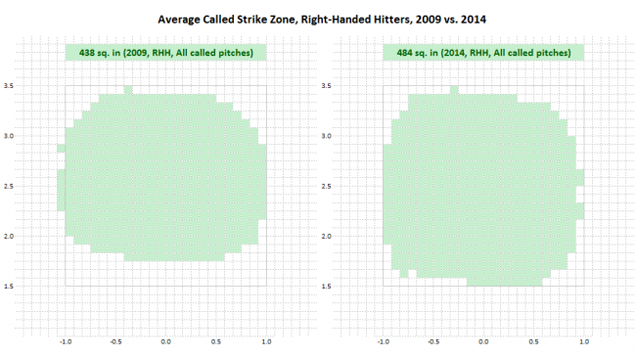 |
| Honestly. He has NO idea what he's doing |
Replay in baseball has been a mixed bag. The whole challenge system is deeply flawed, and will ultimately have to be replaced. But it has worked out well on the bases, where it's hard for an umpire to detect the very short time intervals between the arrival of the ball and the foot on the bag, and even harder to see precisely where and when a player is tagged. These things are good, because they make certain that the calls are correct, and they force the game itself to abandon lazy assumptions like the area play, where the second baseman need only be 'in the area' of second base, and the assumption that if the throw clearly beat the runner, the runner is out, even if the tag play was ambiguous. But there is one key area that is the greatest source of frustration, of consternation, and even ejections, and that area is absolutely, fundamentally off limits from replay. I'm speaking, of course, about balls and strikes.
The most egregious part of the game of baseball is balls and strikes. There are two fundamental problems with using humans to call balls and strikes. First is they refuse to enforce a standardized strike zone. That's unbearably ludicrous in and of itself. What if every football referee had a different end zone? And second is the wide difference between umpires. The rulebook defines the strike zone, but absolutely NO umpire calls strikes based on the legal zone - note that if they did every hitter would be ejected from the game by the third inning - and EVERY umpire has a different zone. To the point where part of the scouting process before a series is to study and document the way the various umpires on a given crew call balls and strikes.
What strikes me as most odd about this situation is the near universal insistence that calling balls and strikes remain the exclusive province of the umpire, even as an automated technology is on display every day and night on virtually ever game broadcast. Using nothing more than cameras, they can display the precise location and trajectory of every pitch. And if you wanted even more precision, it would be simple to put an RFID chip in the ball and sensors in the ground between the mound and home plate. In other words, the most perfected technology available is precisely the one that is universally rejected, in favor of a disastrous and chaotic human factor.
The point is simply this. The single best thing you could do to improve the quality and consistency of MLB games is to let modern robotic systems call the balls and strikes. Hitters would be able to learn a single zone, pitchers would always know where the 'black' was on the plate, and there would be no more tedious arguing and tantrum throwing over the strike zone. For me, that would make the games much more interesting.
...

No comments:
Post a Comment